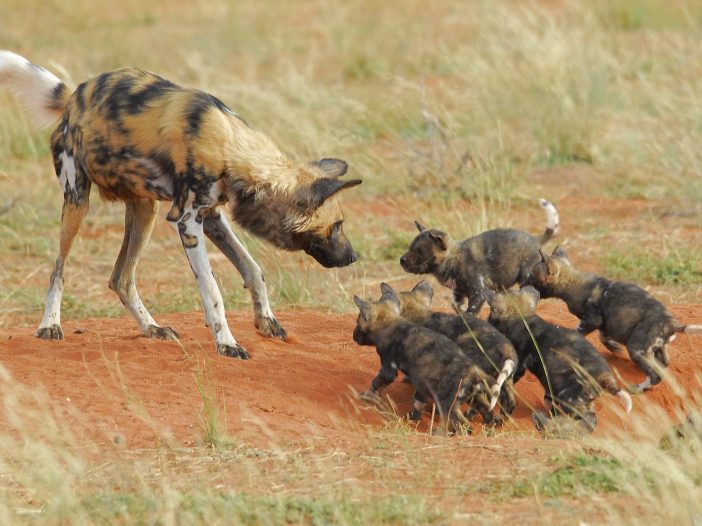
Where wild dogs tree leopards, lion cubs play with pangolins and aardvarks rule the night…
April/May can be a magical time in the Kalahari. This year, unseasonal rains have carpeted the apricot-colored desert sands of Tswalu Kalahari with wide swathes of wild yellow sunflowers and waving plumes of silvery grasses on which springboks pronk and bustards preen.
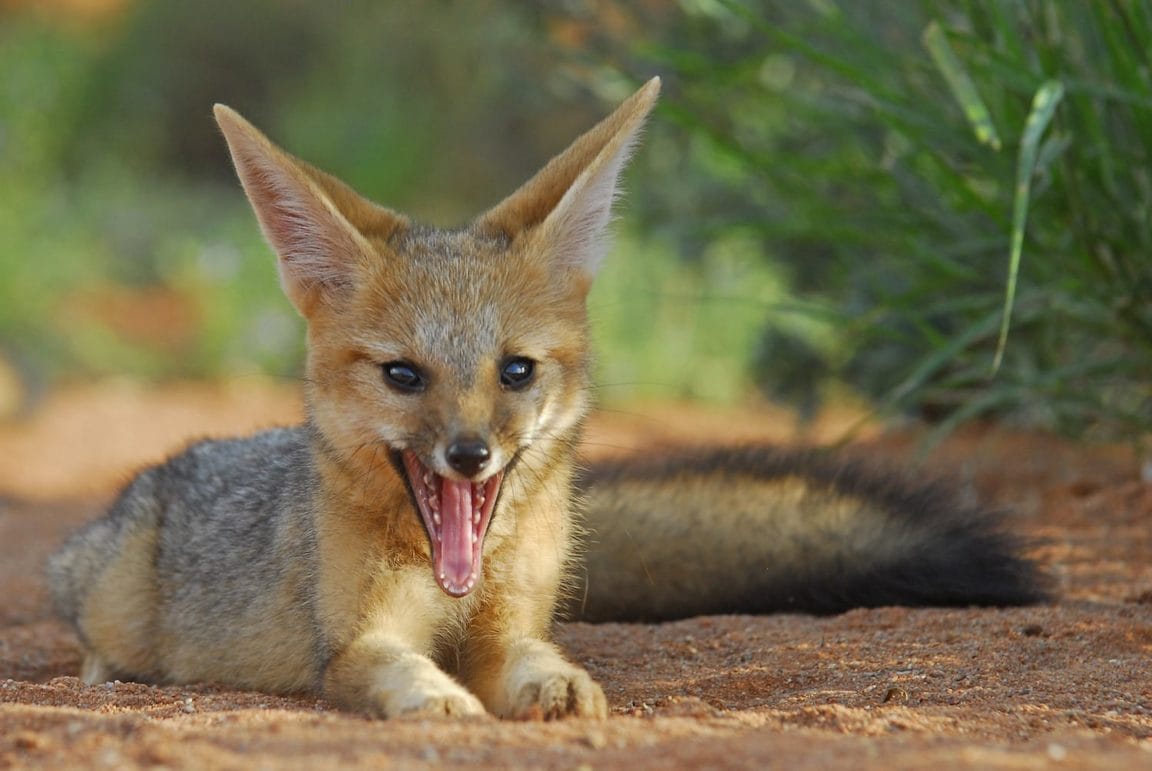
Of Wild Dogs and Leopards
Evening game drive on arrival day…
Shadows lengthen and the heat of the day starts to dissipate as we speed to the water hole, hoping to catch the resident pack of wild dogs as they wake up from their afternoon slumber and disperse into the night.
We are too late to catch them socializing – instead we see them clustered at the base of a tree, trilling and jumping excitedly about at a leopard mum and her two youngsters who have clearly beaten a hasty retreat to the safest retreat atop two trees! It is supposedly hard to see leopards in Tswalu. But within minutes of arriving, we have seen three…and a whole pack of wild dogs besides!
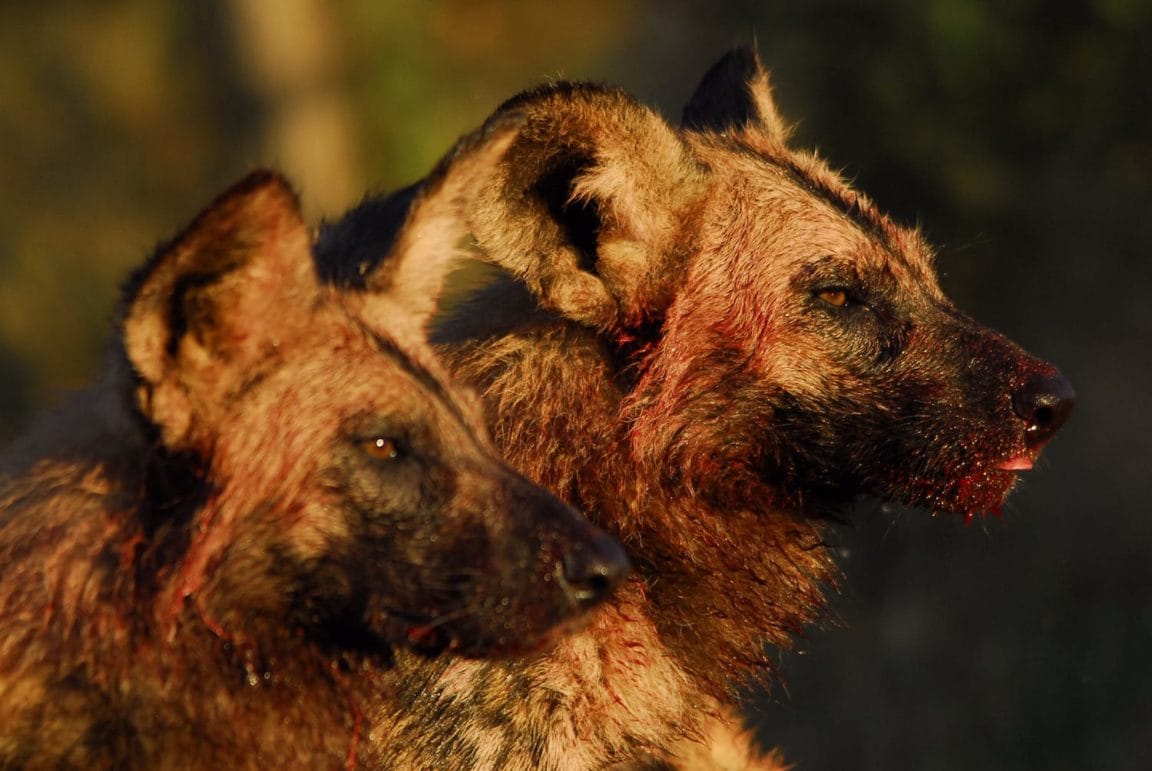
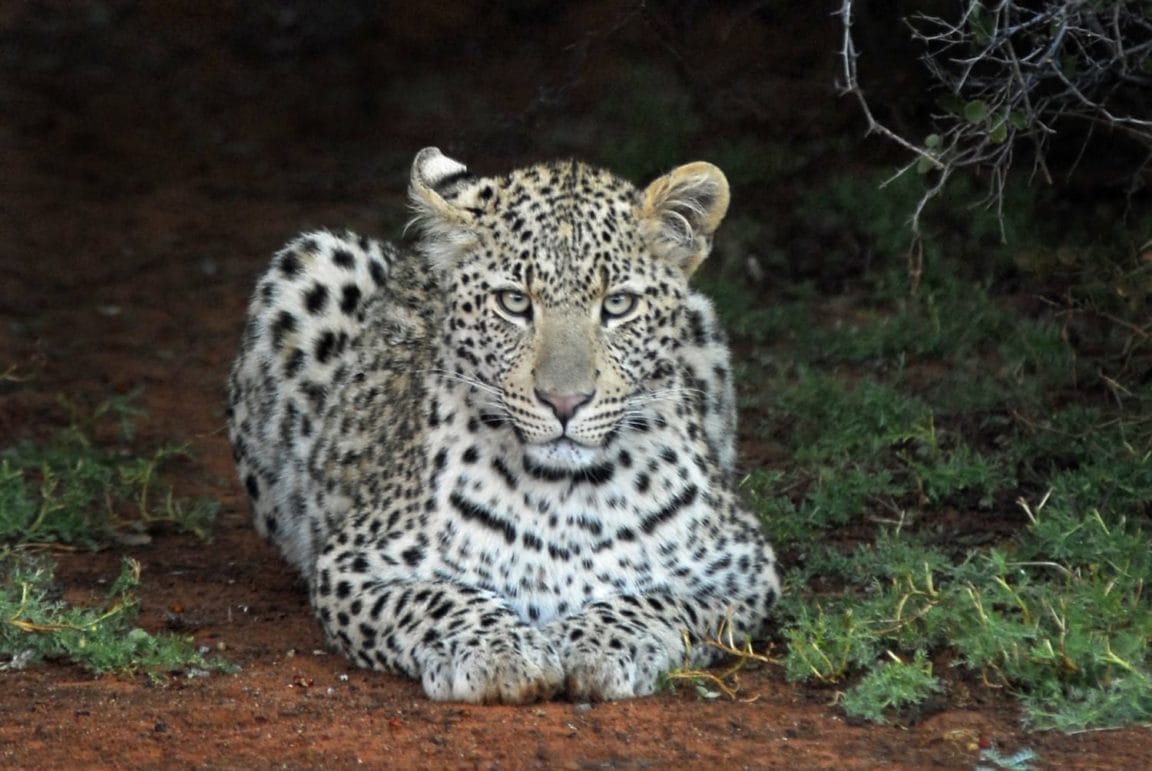
This brilliant dog/leopard sighting is followed by a delicious dinner in the company of Gus, the chief ecologist of Tswalu who has just been with a brown hyena youngster as he wound his way towards us. He tells us about the various research projects currently under way on the reserve, the massive undertaking that was the restoration of this formerly blighted landscape and then there is a spirited discussion on rhino horn sale.
The wines change with each course and naturally, the discussion gets livelier. One of his statements stays with me late into the night – the work of an ecologist, he says, is not to manage nature, but simply to facilitate her. I like that. At most reserves in South Africa, the heavy hand of human intervention is evident. Here, the land has blossomed slowly and the wildlife is thriving under the watchful and patient eye of Gus & his team.
Morning game drive… Tswalu is nestled within a bowl of ancient mountains, where the gnashing and smashing of the underground tectonic plates is evident in the above-ground fissures and folds of the ranges that dominate its horizon. These highlands are the ‘incubators of bio-diversity‘, the nursery grounds for Tswalu‘s wildlife.
There is the smell of wildness in the air and the desert morning is freezing as we huddle under our covers and drive off in the pre-dawn darkness towards the faraway sounds of a calling lion. Pangolin tracks often criss-cross the road but yield nothing. Instead, the tracker guides us towards a freshly killed kudu bull. The bull’s eyes still have light in them and blood flows down in a thin trickle from puncture wounds on his massive neck. I can’t even begin to fathom the strength it would have taken to bring down this magnificent animal. The flattened grass and smashed branches nearby are mute witnesses to what must have been a truly herculean battle of wills. A hungry pride feeds…
Of Lion Cubs and Pangolins
The plan is to head to the stables, mount our horses and ride off into the Kalahari sunset. But halfway through, Warren’s earpiece crackles. It’s Gus on the radio. Do we want to see lion cubs playing with a pangolin? Do we?? But the lions are all the way over on the northern side of the reserve! Will we make it there on time? Will the pangolin have crept away by then?
We don’t have a key to the gates that divide the reserve and must first rush off to Motse to grab a set. But when we finally reach the fence, the key won’t fit!! I can’t believe I’m so close to seeing a pangolin but yet so far! On the contrary, Warren is as cool as cucumber and calmly finds a detour that eventually works. I, however, am a mess of nerves, convinced that fate will somehow conspire to steal the sighting from me. But fate is not so cruel. With flailing hands and disbelieving eyes, I finally get to see my first ever pangolin! It is baby pangolin, curled up into a ball and waiting for the lion cubs to lose interest in him.
They all do, except one cub, who objects vociferously to his toy walking off into the night. Darkness descends – like all African nights – very rapidly. And we leave the baby pangolin in the tall grass to make his way back to his burrow. He is surprisingly unscathed, despite the rough treatment he has undoubtedly received at the hands of the cubs. We see the little pangolin trundle away like a mini-dinosaur, walking upright on his two rear feet, his tail held high enough not to drag on the ground.I am still shaking with excitement as we head on to dinner at the dunes, and the Malori sleep-out deck. This is on the “non-lion” side of the reserve and I recommend it heartily, although Tswalu also makes up “outside” beds for its guests in the main lodge.
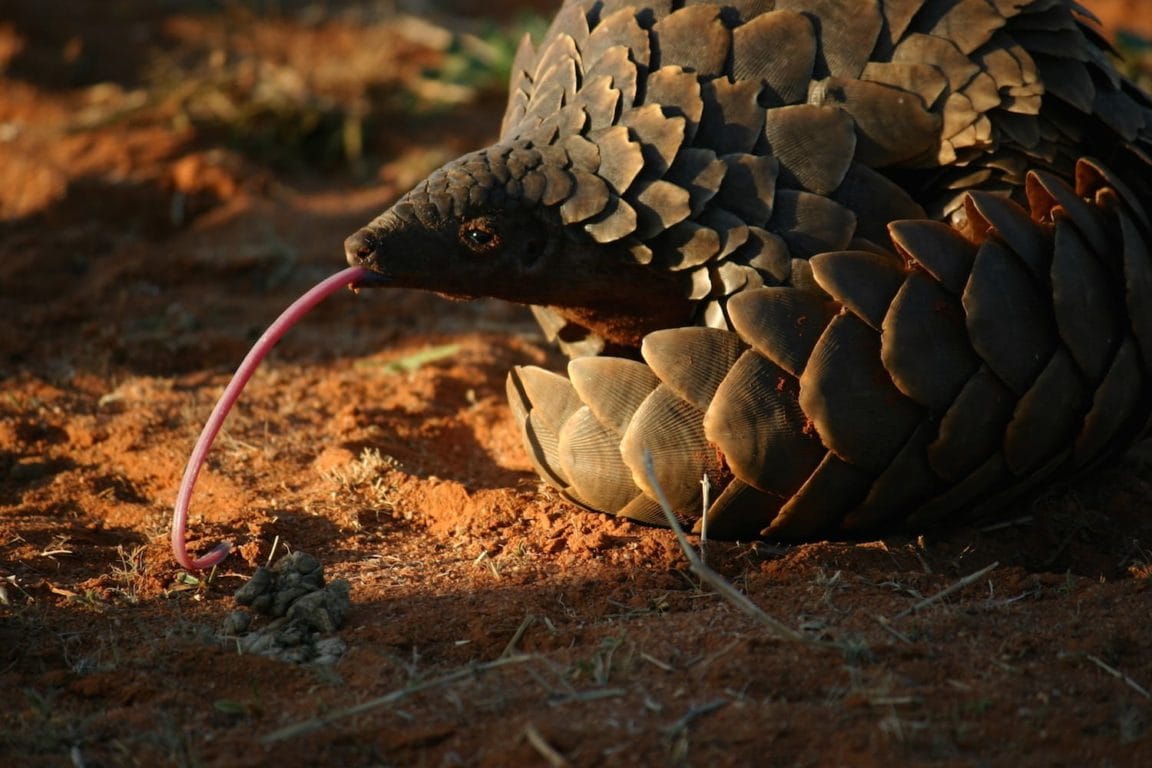 Can this drive get any better? Yes, it can. En route back, our tracker shines his light onto the peach/pink hindquarters of an aardvark as it runs quickly into the bush. No time for photos, but I am surprised by the heft and size of the animal. I had always imagined an aardvark to be like a large hare or a rabbit. Instead I see a stocky animal with a solid profile.
Can this drive get any better? Yes, it can. En route back, our tracker shines his light onto the peach/pink hindquarters of an aardvark as it runs quickly into the bush. No time for photos, but I am surprised by the heft and size of the animal. I had always imagined an aardvark to be like a large hare or a rabbit. Instead I see a stocky animal with a solid profile.
Meerkats at Tswalu
Morning game drive…
We rise with the desert lark this morning, ready for a close encounter with a family of meerkats. Tswalu is home to several colonies of these engaging little creatures, who have been immortalized in the very popular TV series “Meerkat Manor” (millions of people used to avidly follow this series chronicling the lives and times of this desert species).
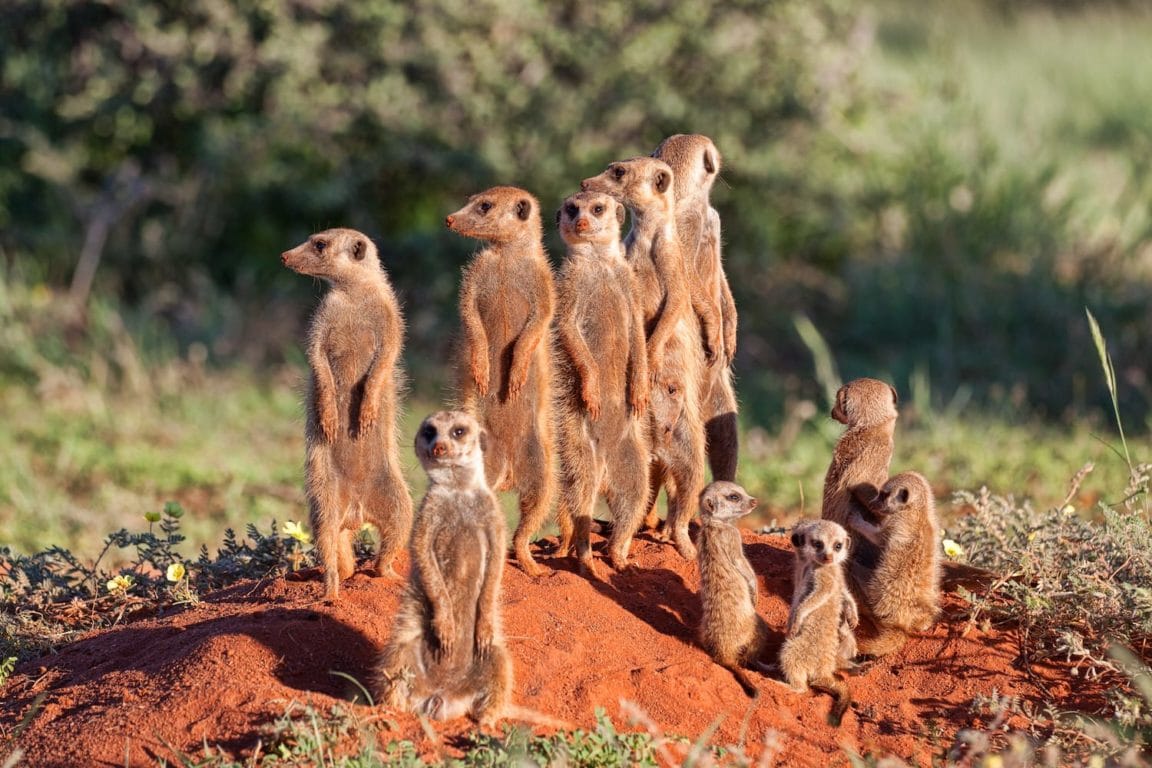
Some of these colonies have been habituated to human presence – this means that you can watch their goings and comings and activities from up close but respectfully. They are still wild animals and although they tolerate us quite well and go about their daily business quite happily, they are skittish about too much movement and loud voices and it is best to observe them quietly. What a charming morning encounter, and who knew that there were so many edible goodies hidden in the harsh Kalahari sand.
Tswalu Kalahari: For True Wildlife Aficionados
At Tswalu, with some luck, you can actually ‘walk with aardvark’. Their trackers are the best I have seen in a very long time and it is entirely possible to track whatever you like, both on foot and in a vehicle. From aardwolf, brown hyena, aardvark, mountain zebra to pangolin, wild dogs, cheetah – these rarest and most endangered of animals are all accessible here. Your pursuit may not always be easy or even successful, but there is a real thrill to knowing that these animals are here and that with some luck, you stand a fighting chance of finding them. The Kalahari sands are a web of tracks and spoors – a treasure trove of clues for the intrepid tracker.
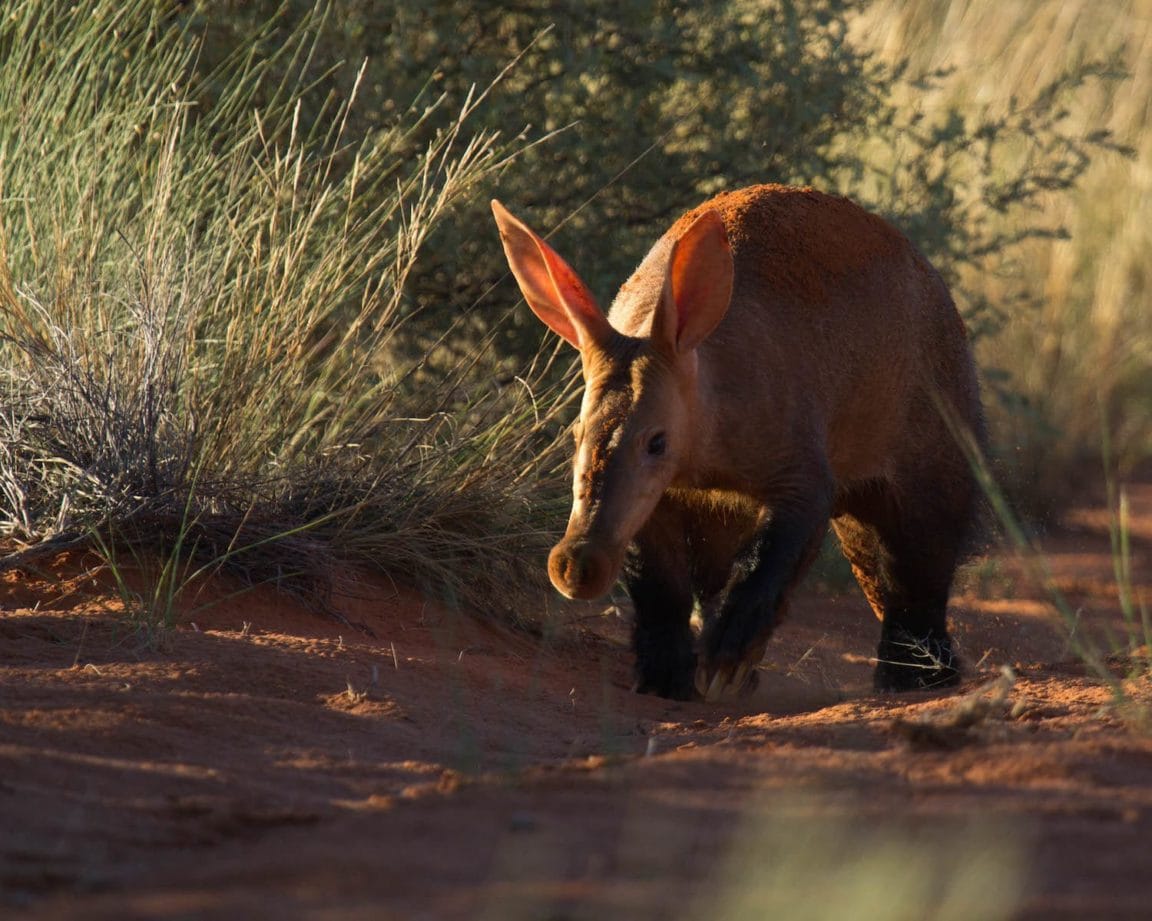 Of course it helps that the costs include a private guide, vehicle and tracker for each party of guests. Not to mention superb accommodations, food and wine.
Of course it helps that the costs include a private guide, vehicle and tracker for each party of guests. Not to mention superb accommodations, food and wine.
For the wildlife aficionado seeking unusual wildlife in a beautiful, remote setting, your next destination should be Tswalu Kalahari.
Written by Sangeeta S. Prasad. Images courtesy Tswalu Kalahari.

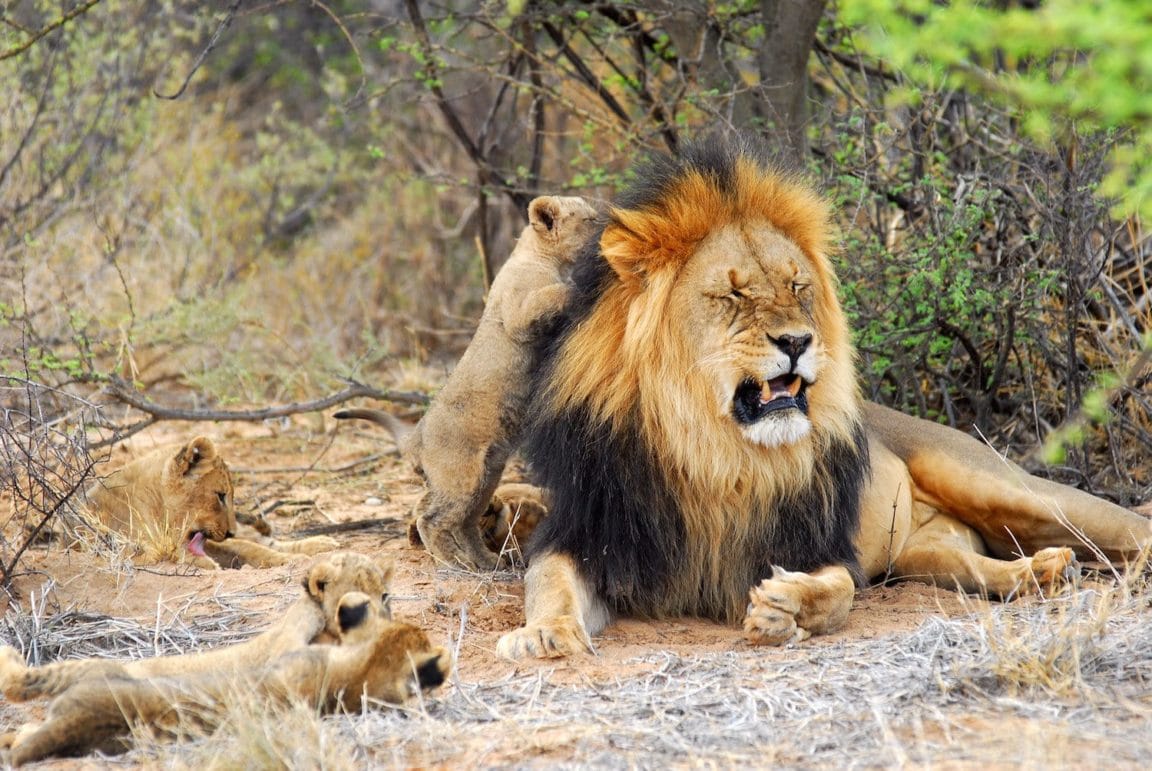
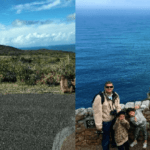
Leave a Reply